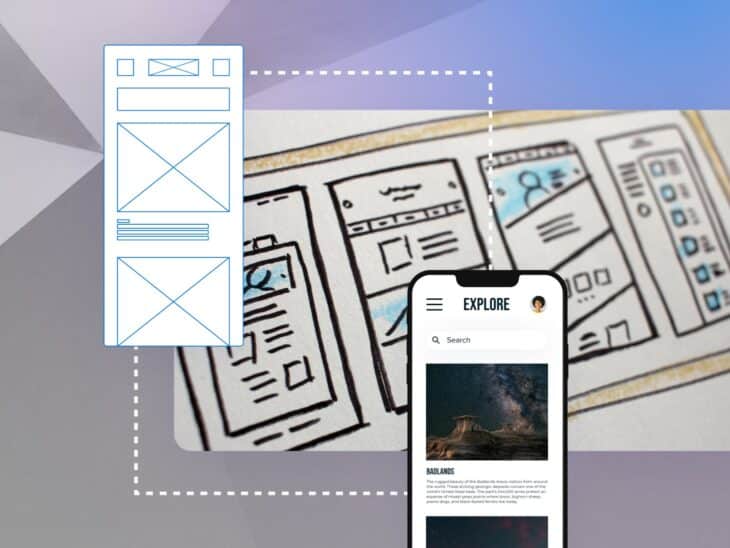Introduction
In the modern era of digital technology, a website is frequently the initial point of contact between a company and the people who might become its consumers. It acts as a storefront for a virtual store, a platform for participation, and a route to achievement in the arena of the internet. On the other hand, the effectiveness of a website is dependent not just on its design and content but also on its operation. It is essential to streamline the functioning of a website in order to improve the user experience, raise conversion rates, and ultimately accomplish business goals. We will go into the methods and tactics that may be used to improve the functioning of a website in order to get the best possible performance in this complete guide. Streamlining Website Functionality: A Guide

The Importance of Streamlining Website Functionality
It is the capability of a website to carry out operations and provide content to users in a smooth manner that is referred to as its functionality. Every facet of functionality, from navigation to loading speed, plays a significant part in determining the user experience and affecting the behavior of visitors. This is why simplifying the functionality of a website is of the utmost importance:
Enhanced User Experience
For a website to be successful, user experience (UX) is an essential component. A functionality that has been streamlined assures that visitors will have an easy time navigating through the site, finding information that is relevant to their needs, and completing the actions that they desire without meeting any impediments. Positive user experiences are a result of smooth interactions and intuitive interfaces, which contribute to the development of trust and encourage users to return for more visits.
Improved Conversion Rates
In addition to being user-friendly, a website that has been properly optimized is also focused on conversions. Businesses have the ability to minimize friction points in the user experience by streamlining functionality. This makes it simpler for visitors to do the desired activities, such as completing a purchase, signing up for a newsletter, or filling out a contact form. It is common for increased usability and efficiency to result in increased conversion rates and improved return on investment. https://diversewebsitedesign.com.au/website-designer/-bondi/
Competitive Advantage
Businesses need to make every effort to differentiate themselves from their rivals in order to succeed in the competitive internet environment. An exceptional user experience is one of the most distinguishing characteristics of a website that has been streamlined in terms of its functioning. This can be a huge competitive advantage. In a market that is extremely competitive, businesses have the opportunity to secure new clients and keep existing ones by placing an emphasis on usability and performance.
Key Strategies for Streamlining Website Functionality
A combination of strategic planning, technological competence, and ongoing improvement is required in order to optimize the functionality of a website. Take into consideration the following important strategies:

Responsive Design
Having a website that is responsive is an absolute must in this day and age, given the prevalence of mobile devices. The use of responsive design means that your website can easily adjust to different screen sizes and resolutions, thereby delivering a user experience that is consistent across all devices, including desktop computers, laptops, tablets, and mobile phones. By giving mobile responsiveness a higher priority, you may avoid alienating potential consumers while simultaneously catering to the expanding number of people who use mobile devices. Streamlining Website Functionality: A Guide
Fast Loading Speed
Users have come to anticipate rapid gratification in the fast-paced world of digital technology. Visitors can become frustrated and leave your website before they even have the opportunity to explore the stuff you have to offer if it takes a long time to load. When it comes to retaining user interest and lowering bounce rates, optimizing loading speed is really necessary. Reduce the number of items that aren’t necessary, make use of browser caching, and make use of content delivery networks (CDNs) to ensure that page loading times are as quick as possible.
Intuitive Navigation
When it comes to directing customers through your website and assisting them in locating the information they are looking for, navigation is an extremely important factor. It is important to maintain navigation menus that are easy to understand and have clear labels and a logical hierarchy. Breadcrumb trails, site maps, and search tools should be used to provide users with assistance in accessing content that is either extensive or difficult. It is possible to increase user happiness and stimulate exploration by making navigation that is simple and straightforward.
Streamlined Checkout Process
When it comes to websites that sell products online, the checkout procedure is a crucial point at which conversions can either skyrocket or plunge precipitously. Streamline the process of checking out by reducing the number of form fields, enabling choices for guest checkout, and offering multiple payment methods for increased convenience. The incorporation of progress indicators will keep users informed about the stage they are currently in during the checkout process. This will result in a reduction in the rate of abandonment and an increase in conversions.
Optimized Content Delivery
Even if content is king, how it is delivered can have a significant impact on the user experience. Compressing pictures, utilizing lazy loading techniques, and giving priority to material that is displayed above the fold are all ways to optimize the delivery of content and ensure that it is displayed quickly. The implementation of content delivery networks (CDNs) allows for the distribution of content among servers servicing different geographic locations, hence lowering latency and enhancing functionality overall. It is possible to attract users and maintain their engagement if you present content in an effective manner.

Conclusion
The process of streamlining the functioning of a website involves more than simply making things appear nice; it also involves having things perform without any hiccups. The creation of websites that are able to please visitors and generate meaningful results can be accomplished by organizations by placing an emphasis on the user experience, optimizing performance, and removing friction points. In order to maintain a competitive edge in the current digital landscape, it is vital to make an investment in the optimization of the functioning of your website. This is true whether you are an e-commerce merchant, a corporate organization, or the owner of a small business. By adhering to the tactics that are mentioned in this book, you will be able to observe your website transform into a proficient instrument for accomplishing your intended commercial goals. Streamlining Website Functionality: A Guide




